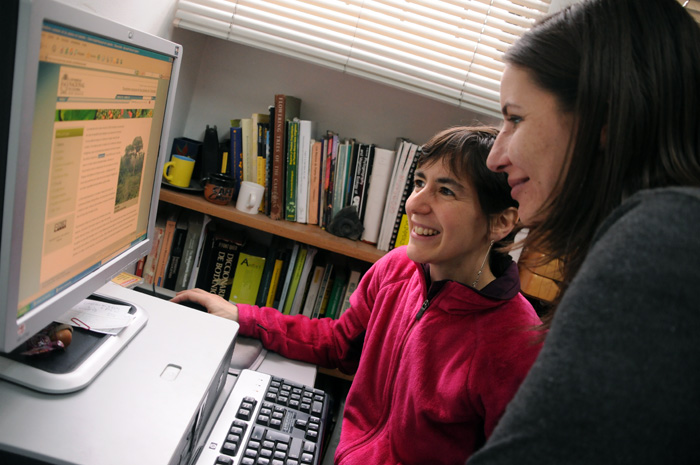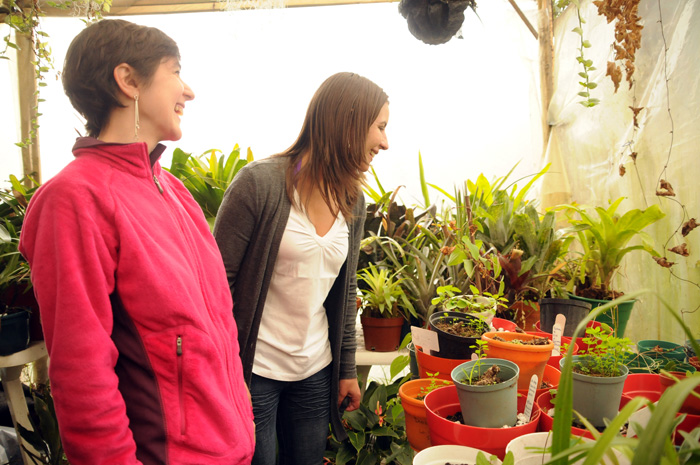Close to 8,000 species of plants, described from the botanical expedition until today, with their common or vulgar appellatives used in the regions where they can be found and the different uses that popular wisdom has for them, can be consulted in the virtual world.
This is the first Colombian dictionary of plants on Internet. Its main characteristic is that it is written in a simple and friendly language for all users, no matter their degree of knowledge, to have easy access to information just by adding the common name of the species. Besides, experts can use scientific names, such as Taraxacum officinale (genus and specific name, respectively).
This work gathers more than 18,000 common names, and it is based on a big labor started, more than 15 years ago, by botanist Rodrigo Bernal, former professor at the Natural Sciences Institute (ICN, for its acronym in Spanish) of Universidad Nacional de Colombia. Since then, students and professors have been joining the project, among them botanist Gloria Galeano, biologists Helena Sarmiento, Angela Rodriguez, Mauricio Gutierrez and Lauren Raz, director of the Informatics Group of Biodiversity at ICN, who is in charge of the virtual herbarium.
For this huge edition, the authors used three important sources to gather data: revision of literature related to Colombian plants, traditional and botanic bibliography, and different books related to plants.
In this Colombian National Herbarium and in the Amazonian Herbarium of the Amazonian Institute for Scientific Research (Sinchi), these experts found points of reference and data bases that were used to complete the information of each species.
Native knowledge
A third source was places directly, where all the medicinal uses that traditionally these plants have were consulted. "For doing this, we talked to the peasants and elders that are the real experts," asserted Sarmiento.
Infusions with dandelion to lose weight treat arthritis or reduce cholesterol levels, elderflower for treating coughing, insomnia and migraines, among hundreds of recopies that popular wisdom has adapted for different needs can be found in this catalog.
According to professor Sarmiento, each of the 32 departments in Colombia has a particular botanic biodiversity, and in each region the same specie has a characteristic name, for this reason, her work is focused on the knowledge of vulgar names, with the purpose of providing the users all this natural richness.
Despite this virtual dictionary, made by ICN, is the most complete catalog made so far, its authors know that many things have to be included. "This is a process that never ends, since each day more plants are collected and new species are described that would complement the catalog."
Informatics and biodiversity
For Professor Lauren Raz, informatics as a tool is very important for acquiring knowledge about diversity, since "it permits a constant updating of the information regarding new botanic discoveries."
In fact, its use is necessary in all knowledge sciences. "No researcher can perform a study and take advantage of data only with paper, each expert has his or her own database and tools for processing information," mentioned Patrick Bryan Heidorn, director of the School of Information Resources and Library Science at the University of Arizona.
Heidorn, who works as chair of the JRS Biodiversity Foundation, a private philanthropic foundation in the US that supports program development for the preservation of biodiversity, asserted that science is based on data, and for this reason Information, knowledge and technology complement each other to increase the spectrum of knowledge about nature.
According to Patrick Bryan Heidorn, invited by the Natural Sciences Institute to visit Universidad Nacional de Colombia, information technology in the 15th century was based on the printer, developed in 1440 by Johaness Guttemberg, although Chinese developed this tool earlier. This caused a big revolution in the way information about biology was divulgated.
The expert explains that "scientists developed classification schemes that allowed them to organize the species. They used to use card catalogs and note books. They used to determine carefully the location of the species on paper maps that could be copied or included on printing material. This technology era for information was the most advance on that time."
 Correo Electrónico
Correo Electrónico
 DNINFOA - SIA
DNINFOA - SIA
 Bibliotecas
Bibliotecas
 Convocatorias
Convocatorias
 Identidad UNAL
Identidad UNAL





